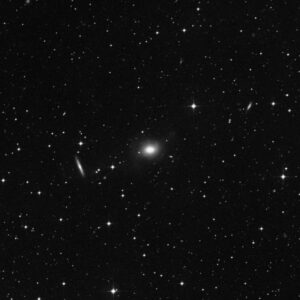Research Unveils New Details About NGC 5018 Galaxy’s Globular Clusters
 A detailed study of the NGC 5018 galaxy group has provided new insights into its globular cluster (GC) system. Utilizing data from the VLT Survey Telescope (VST), researchers examined this galaxy group, situated about 132.5 million light-years away in the Virgo constellation. The findings reveal crucial information about the distribution and interactions of its clusters, shedding light on the formation and evolution of early-type galaxies, where GCs play a pivotal role.
A detailed study of the NGC 5018 galaxy group has provided new insights into its globular cluster (GC) system. Utilizing data from the VLT Survey Telescope (VST), researchers examined this galaxy group, situated about 132.5 million light-years away in the Virgo constellation. The findings reveal crucial information about the distribution and interactions of its clusters, shedding light on the formation and evolution of early-type galaxies, where GCs play a pivotal role.
Key Insights from the Study
The study, led by Pratik Lonare from the Abruzzo Astronomical Observatory and published on arXiv, analyzed deep imaging data from the VST Elliptical Galaxy Survey (VEGAS). According to phys.org, the team identified thousands of GC candidates within the NGC 5018 group, highlighting an intra-group GC system. NGC 5018 itself exhibited a significant concentration of GC candidates, while other galaxies in the group showed minimal activity.
The radial density profile of GCs in NGC 5018 mirrors its surface brightness, with a major colour component peaking at 0.75 mag. The analysis also identified a mix of blue and red GC populations, peaking at 0.45 and 0.80 mag, respectively. Blue GCs were found to be more widely distributed than red ones, suggesting that tidal interactions may have scattered some clusters into the intra-group space.
Significance of the Findings
The researchers estimated approximately 4,000 GC candidates across the galaxy group, with 485 associated specifically with NGC 5018. This distribution corresponds to previously observed intra-group light. The study concluded that tidal forces from neighboring galaxies likely played a role in dispersing these clusters, offering new insights into the dynamics of galaxy groups.








